Palamedes Swallowtail (Papilio palamedes)
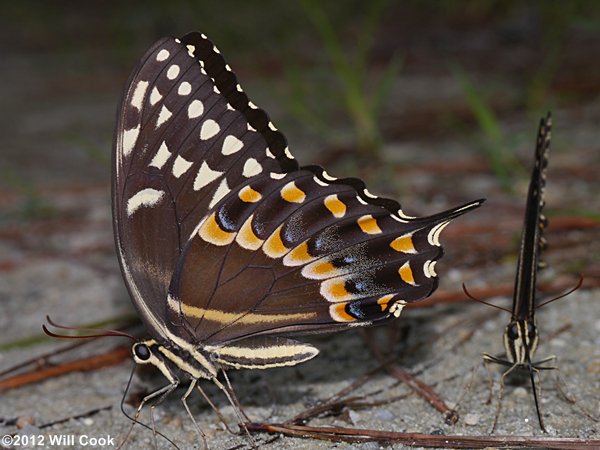
Palamedes is usually the most common swallowatail in the Coastal Plain. Its range closely matches that of its host plants, Swamp Bay (P. palustris) and Red Bay (Persea borbonia), aromatic evergreen trees in the laurel family.
Croatan National Forest, Craven Co., NC 8/26/2012.
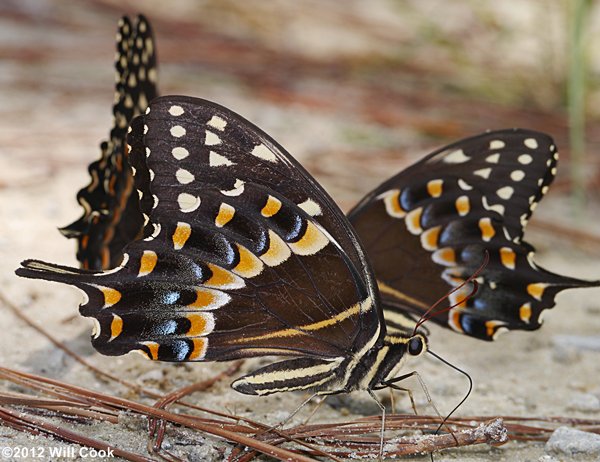
When seen, the yellow stripe on the underside of the hindwing makes it easy to identify.
Croatan National Forest, Craven Co., NC 8/26/2012.
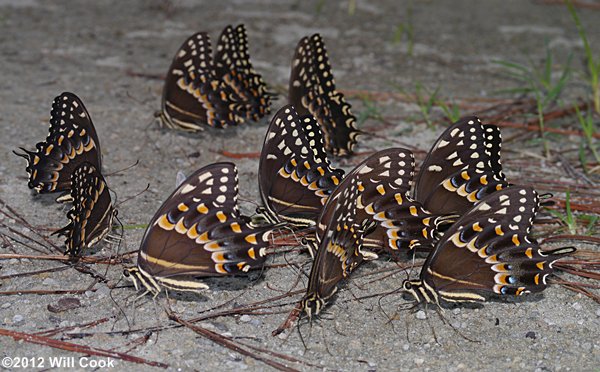
A Palamedes "puddle party".
Croatan National Forest, Craven Co., NC 8/26/2012.
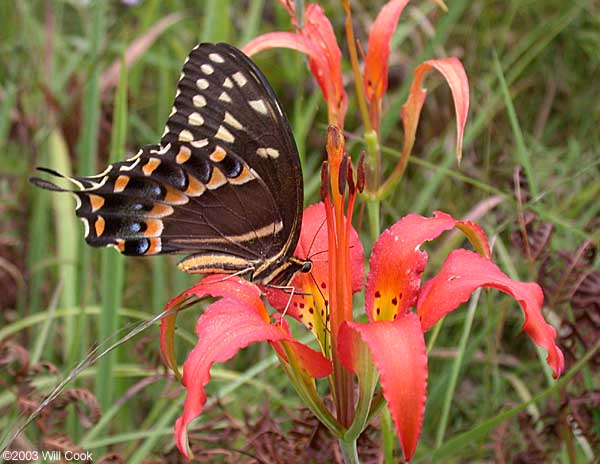
This one is using its long proboscis to sip nectar from a Pine Lily (Lilium catesbaei).
Croatan National Forest, Craven Co., NC 9/6/03.
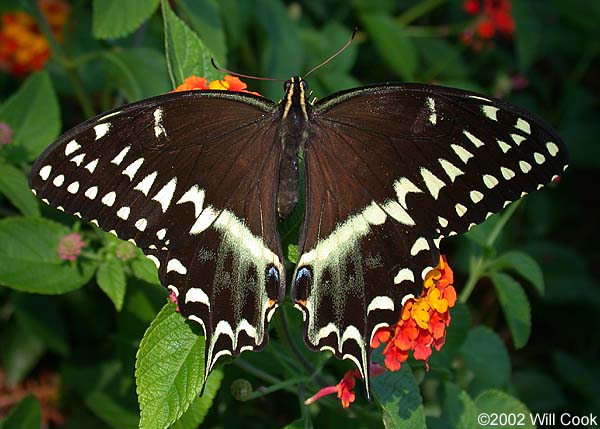
Above, Palamedes Swallowtails can be mistaken for other dark swallowtails, particularly male Black Swallowtail (Papilio polyxenes).
Palamedes rarely wander into the southern Piedmont. This, unfortunately, is posed road-killed specimen from the Piedmont section of Harnett Co., NC 7/30/02.

Dare Co., NC, 9/8/01.
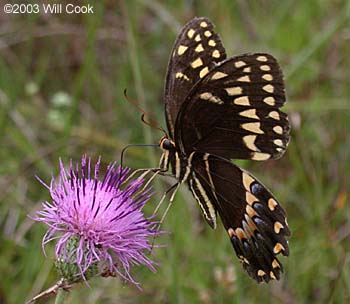
Craven Co., NC 9/6/03.
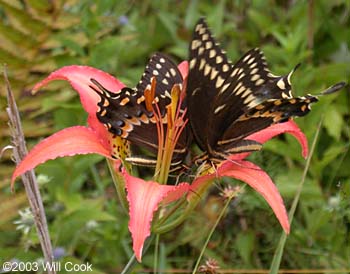
As you can see, they can really get into Pine Lilies. Craven Co., NC, 9/6/03.
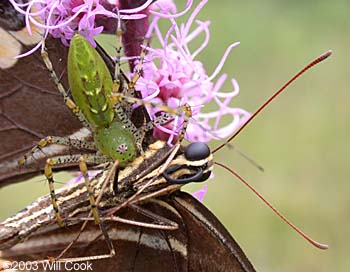
Even a butterfly as big as a Palamedes may fall prey to the ferocious Green Lynx Spider. Craven Co., NC, 9/6/03.